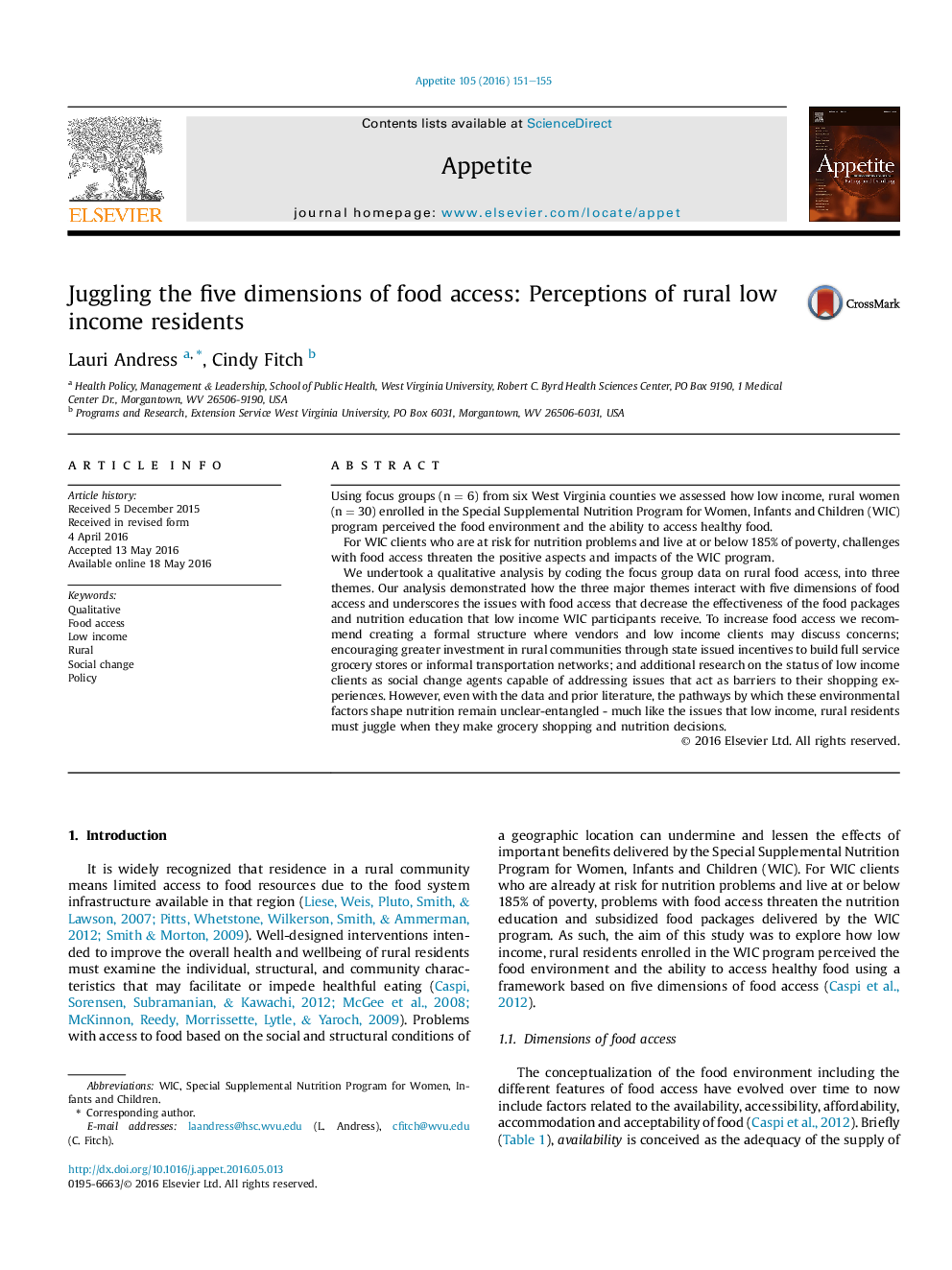| Article ID | Journal | Published Year | Pages | File Type |
|---|---|---|---|---|
| 7306829 | Appetite | 2016 | 5 Pages |
Abstract
We undertook a qualitative analysis by coding the focus group data on rural food access, into three themes. Our analysis demonstrated how the three major themes interact with five dimensions of food access and underscores the issues with food access that decrease the effectiveness of the food packages and nutrition education that low income WIC participants receive. To increase food access we recommend creating a formal structure where vendors and low income clients may discuss concerns; encouraging greater investment in rural communities through state issued incentives to build full service grocery stores or informal transportation networks; and additional research on the status of low income clients as social change agents capable of addressing issues that act as barriers to their shopping experiences. However, even with the data and prior literature, the pathways by which these environmental factors shape nutrition remain unclear-entangled - much like the issues that low income, rural residents must juggle when they make grocery shopping and nutrition decisions.
Related Topics
Life Sciences
Agricultural and Biological Sciences
Food Science
Authors
Lauri Andress, Cindy Fitch,
